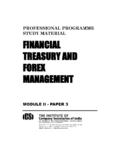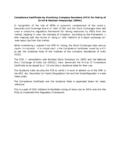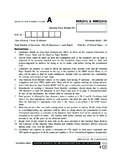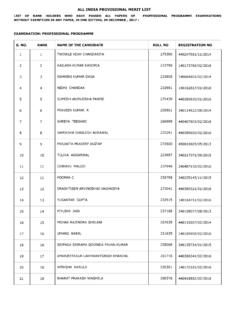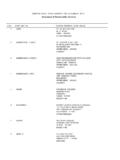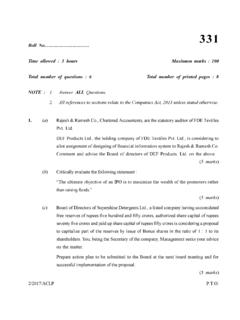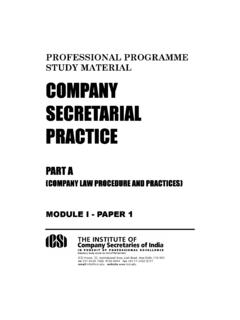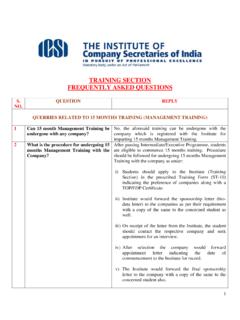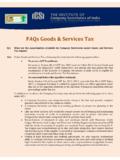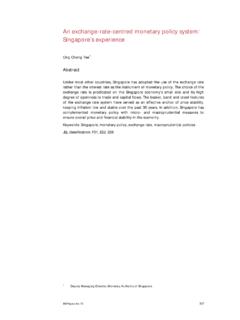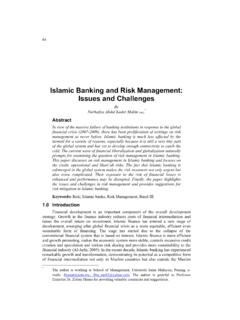Transcription of ECONOMIC BUSINESS ENVIRONMENT - ICSI
1 ECONOMIC &BUSINESSENVIRONMENT425 Lesson1 Basics of Demand andSupply and Forms ofMarket Competition4292 National IncomeAccounting and RelatedConcepts4463 Indian Union Budget4594 Indian Financial Markets4705 Indian Economy5116 Entrepreneurship Scenario5377 BUSINESS Environment5498 Key GovernmentInstitutions556 ECONOMIC & BUSINESS Covered1 Basics of Demand and Supply andForms of Market Competition Theory of Demand and Supply Elasticity of Demand Factors affecting Price Elasticity of Demand Income Elasticity of Demand Cross Elasticity of Demand Increase and Decrease in Demand andExpansion and Contraction of Demand Forms of Market Competition Elasticity of Supply Factors influencing Elasticity of Supply2 National Income Accounting andRelated Concepts Introduction Methods to measure National Income Key Concepts of National Income--Gross Domestic Product (GDP)-GDP at Factor Cost-GDP Deflator-Gross National Product (GNP)-GNP at Market Prices-GNP at Factor Cost-Net National Product (NNP)
2 -NNP at Market Prices-NNP at Factor Cost Domestic Income Private Income Personal Income Disposable Income Real Income Per Capita IncomeEconomic & BUSINESS Environment4273 Indian Union Budget Overview of Indian Union Budget Steps involved in the preparation of UnionBudget Key Terminologies / Heads covered under thebudget Revenue, Capital and Expenditure Budgets Fiscal Deficit Primary Deficit4 Indian Financial Markets Introduction Types of Financial Markets Overview of Indian Financial Ecosystem Noteworthy Developments in Indian FinancialEcosystem Key Facets and Growth of Financial Institutionsin India Monetary Policy Instruments Public and Private Sector Banks Industrial Finance Corporation of India andSmall Industries Development Bank of India Regional Rural Banks (RRBs) Cooperative Banks Non-Banking Finance Companies (NBFCs) Basics of Capital Market.
3 Types of Shares andDebentures Types of Shares Debentures Financial Assistance Scenario for Small andMedium Enterprises of India Financial Assistance for Start-Ups5 Indian Economy Primary (Agriculture and Allied Activities) Major Government Initiatives Secondary (Manufacturing) Tertiary (Services) Market of Services Sector Major Government InitiativesEconomic & BUSINESS Environment428 Further Initiatives Agricultural and Industrial Policies of India Latest Developments-Union Budget 2022 Drawbacks of Agricultural Planning in India-Agricultural Policies-Industrial Policies Balance of Payments Favourable and Unfavourable Balance of Trade Foreign Investments in India - Types and Flows6 Entrepreneurship Scenario G overnment I nit iatives t o FosterEntrepreneurship-Make in India-Stand-Up India-Start-Up India-Skill India-Investment in physical infrastructure Need for Entrepreneurship in India7 BUSINESS ENVIRONMENT Overview of BUSINESS ENVIRONMENT Features and factors influencing BusinessEnvironment Types of ENVIRONMENT Ease of Doing BUSINESS Index by World Bankfor India Ease of Doing BUSINESS Index by Departmentfor Promotion
4 Of Industry and Internal Trade(DPIIT) for States8 Key Government Institutions NITI Aayog Ministry of Corporate Affairs Securities and Exchange Board of India (SEBI) Reserve Bank of India (RBI) Insolvency and Bankruptcy Board of India(IBBI) National Company Law Tribunal (NCLT) National Company Law Appellate Tribunal(NCLAT)429 BASICS OF DEMANDANDSUPPLYAND FORMSOFMARKETCOMPETITIONL esson 1 ECONOMIC & BUSINESS Environment430 THEORY OF DEMAND AND SUPPLYM eaning of DemandDemand is an ECONOMIC principle referring to a consumer's desire to purchase goods and services andwillingness to pay a price for a specific good or of DemandAccording to the law of demand, other things being equal, if price of a commodity falls, the quantitydemanded of it will rise, and if price of the commodity rises, its quantity demanded will decline. It impliesthat there is an inverse relationship between the price and quantity demanded of a commodity.
5 In otherwords, other things being equal, quantity demanded will be more at a lower price than at a higher law of demand describes the functional relationship between price and quantity demanded. Amongvarious factors affecting demand, price for a commodity is the most critical factor. Thus, demand of acommodity is mainly determined by the price of = f(Px).The law of demand may be understood from the following example: PRICE PER CAN (INR)QUANTITY DEMANDED80070200604005060040800301000201 20010140001600 Source: Economics OnlineEconomic & BUSINESS Environment431 Thus, it may be observed that with the rise in price per can, the demand for the cans is of the law of demandThe above stated law of demand is conditional. It is based on certain conditions as given. It is therefore,always stated with the other things being equal . It relates to the change in price variable only, assumingother determinants of demand to be constant.
6 The law of demand is thus, based on the following ceterisparibus Change in Consumer s Change in Consumer s Change in the Change in the Price of Related Expectation of Future Price Changes or Change in Size, Age Composition and Sex Ratio of the Change in the Range of Goods Available to the Change in the Distribution of Income and Wealth of the Change in Government Change in Weather TO THE LAW OF DEMANDT here are few exceptional cases where the law of demand is not applicable, which may be categorised asfollows:Giffen Goods : In the case of certain inferior goods called Giffen goods (named after Sir RobertGiffen), when the prices fall, quite often less quantity will be purchased than before because of thenegative income effect and people s increasing preference for a superior commodity with the rise intheir real income.
7 Examples of Giffen goods can include bread, rice, and perCanDemandCurveAQuantityPer week80604020040080012001600 BSource : & BUSINESS Environment432 Articles of Snob Appeal : Sometimes, certain commodities are demanded just because they happento be expensive or prestige goods, and have a snob appeal . They satisfy the aristocratic desire topreserve exclusiveness for unique : When people speculate about changes in the price of a commodity in the future, theymay not act according to the law of demand at the present price, say, when people are convincedthat the price of a particular commodity will rise still further, they will not contract their demand withthe given price rise: on the contrary, they may purchase more for the purpose of s Psychological Bias or Illusion : When the consumer is wrongly biased against thequality of the commodity with the price change, he may contract this demand with a fall in of SupplySupply represents how much the market can offer.
8 The quantity supplied refers to the amount of a goodproducers are willing to supply when receiving a certain price. The supply of a good or service refers tothe quantities of that good or service that producers are prepared to offer for sale at a set of prices over aperiod of time. Supply means a schedule of possible prices and amounts that would be sold at each supply is not the same concept as the stock of something in existence, for example, the stock ofcommodity X in Delhi means the total quantity of Commodity X in existence at a point of time; whereas,the supply of commodity X in Delhi means the quantity actually being offered for sale, in the market, overa specified period of law of supply states that a firm will produce and offer to sell greater quantities of a product or serviceas the price of that product or service rises, other things being equal.
9 There is a direct relationshipbetween price and quantity supplied. In this statement, change in price is the cause and change in supplyis the effect. Thus, the price rise leads to an increase in supply and not otherwise. It may be noted that athigher prices, there is a greater incentive to the producers or firms to produce and sell more. Other thingsincluding the cost of production, change of technology, prices of inputs, level of competition, size of theindustry, government policy and non- ECONOMIC Ceteris Paribus (a)With an increase in the price of a good, the producer is willing to offer more quantity in themarket for sale.(b)The quantity supplied is related to the specified time interval over which it is law of supply is the microeconomic law that states that, all other factors being equal, as the price of agood or service increases, the quantity of goods or services that suppliers offer will increase, and viceversa.
10 The law of supply says that as the price of an item goes up, suppliers will attempt to maximize theirprofits by increasing the quantity offered for of Law of SupplyThe term other things remaining the same refers to the following assumptions in the law of change in the state of change in the price of factors of change in the number of firms in the change in the goals of the change in the seller s expectations regarding future change in the tax and subsidy policy of the change in the price of other & BUSINESS Environment433 The equilibrium price is the market price where the quantity of goods supplied is equal to the quantity ofgoods demanded. This is the point at which the demand and supply curves in the market : equilibrium, there is no shortage or surplus unless a determinant of demand or a determinant of supplychanges.
